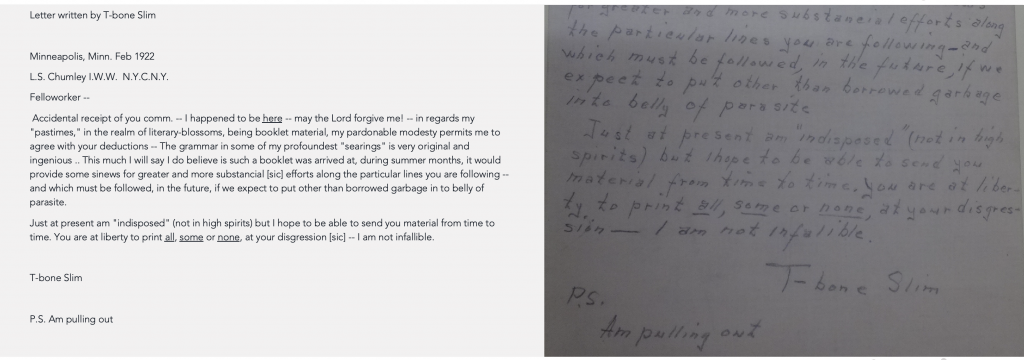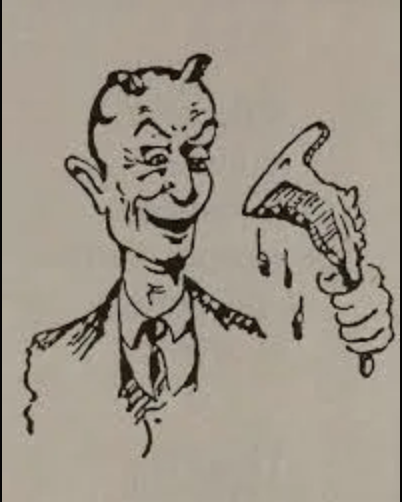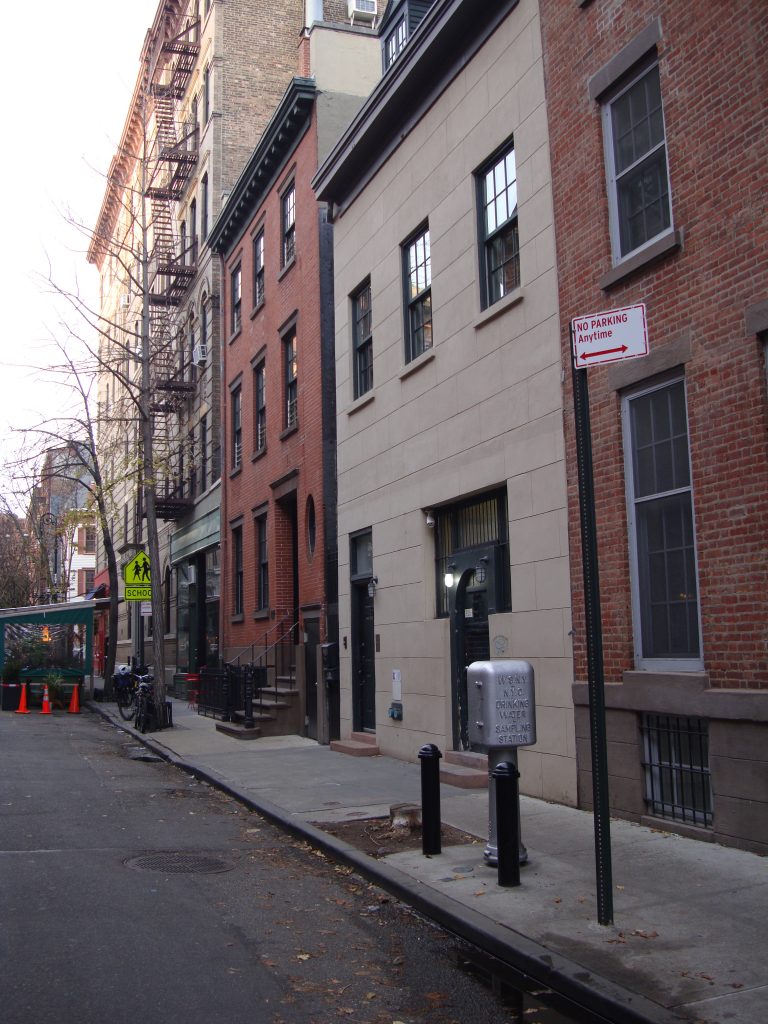Author: Lotta Leiwo
T-Bone Slim Database – Final Steps
Our T-Bone Slim project is soon at its official end. This two-year project has brought together international research group that are interested in transnational poetics of the migrant left from the perspective and in context of T-Bone Slim.
Our group has met monthly for two years and finally we met in person for the first time in August 2023 in Kälviä for T-Bone Slim Symposium. Our trip to Ostrobothnia was full of joyful meetings, interesting presentations, and exciting cultural program.

Before the T-Bone Slim Symposium, some of us met at FinnFest 2023 in Duluth, Minnesota in July. FinnFest’s Jim Leary invited us to talk about T-Bone Slim and the project for the United States Finnish audience. The days were filled with interesting discussions with present day US Finns as well as a field trip to Work People’s College building near Duluth and Työmies publishing premises in Superior, Wisconsin. T-Bone Slim mentions Work People’s College and Duluth often, and it was a delight to see these places.
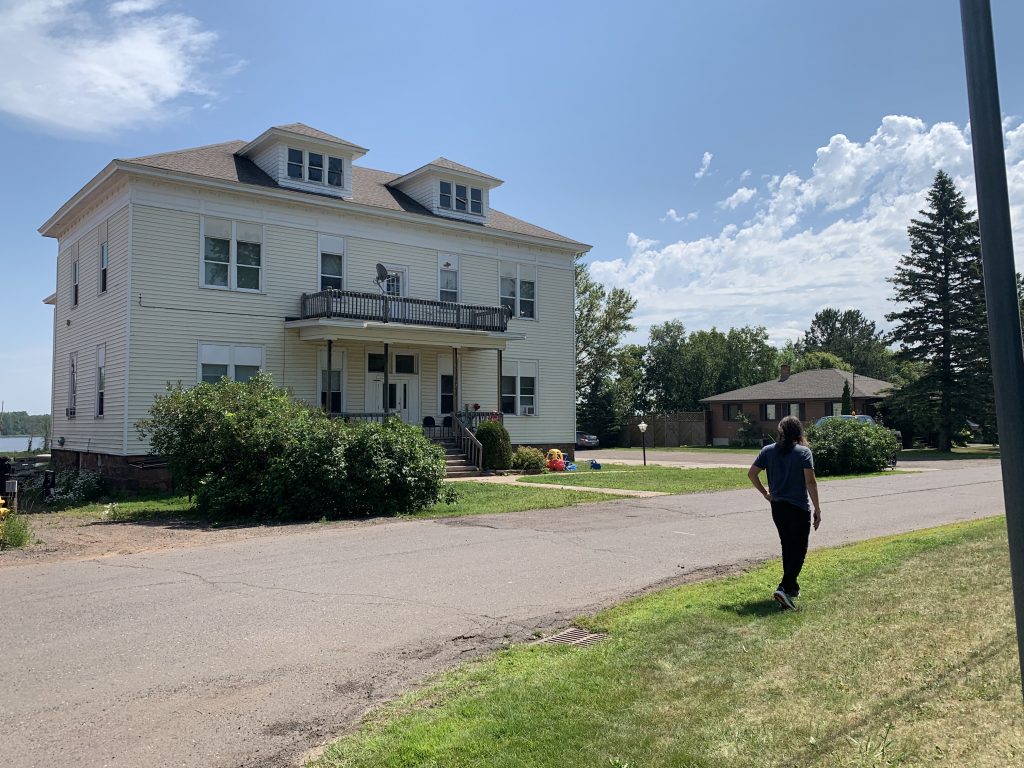
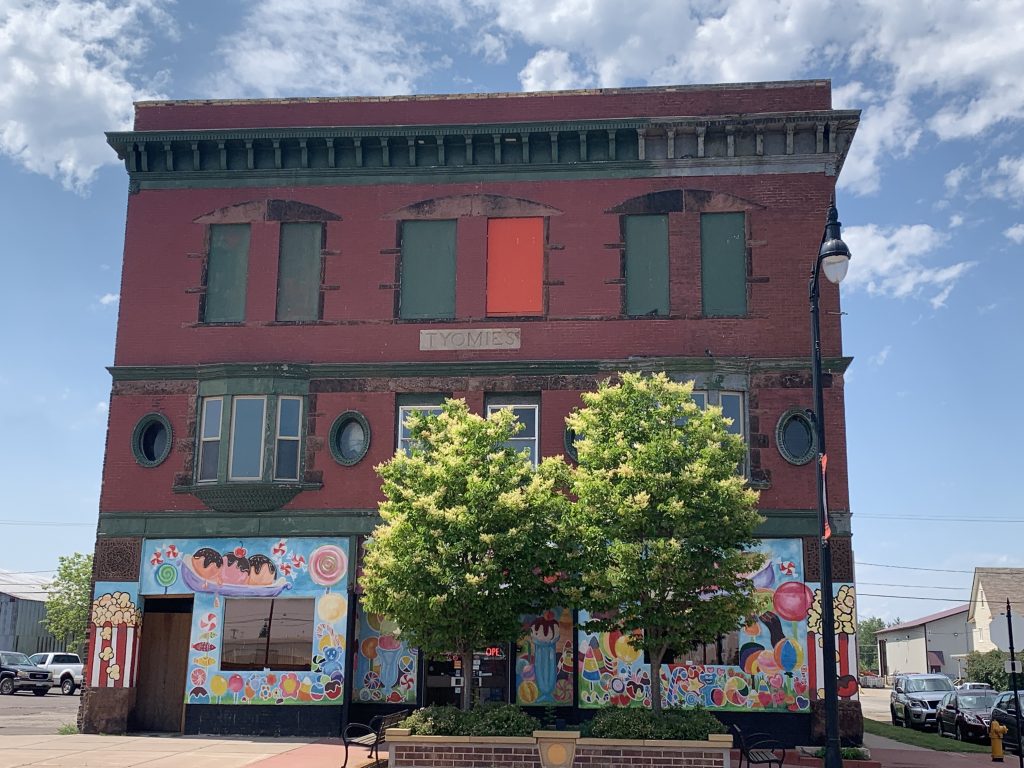
Database News
After warm summer days and interesting discussions, a database construction work-filled fall followed. As the project’s research assistant, I have been very intensely working with T-Bone Slim materials and data – his texts, manuscripts, and photos – for the past 3,5 months. These months have included organizing and re-organizing the data, naming and re-naming hundreds and hundreds of documents, listing and checking metadata, and most of all, transcribing some 690 000 T-Bone Slim’s written words. The corpus is in total 1440 pages and includes 820 051 words. I was happy to receive help from our collaborator Owen Clayton’s research assistant Kayleigh Mansell, who transcribed additional 130 000 words. That is a lot of T-Bone Slim’s words! 1295 articles and manuscripts to be exact.
I am happy that I got to investigate his writings from this perspective. Reading, even cursory reading as I used the aid of optical character recognition (OCR), his texts has given me a unique perspective to his political ideas and rhetoric. The transcribed texts will come promptly in use, as the project’s researchers will write articles about and related to T-Bone Slim for the project’s final publication. More about that later!
Processing the materials and constructing the Database and Corpus has been a constant learning process. Even if I consider myself organized and consecutive, I would do some things a bit differently if I started the project now. Here is a short check list for future reference for anyone constructing smaller or larger databases/ datasets. These could even be helpful for someone “just” collecting research materials.
- Take notes on ALL metadata from the beginning. The more information you gather the merrier you will be at the final lap of you project. I like to collect information in Excel sheets (as you will find out when you upload the T-Bone Slim Database). You can add endless number of columns in an Excel sheet to cover all the details regarding your data: who provided it, where it was originally from, date, own notes, document ID’s, links etc.
- Abstracted data means transforming the qualitative data, for example T-Bone Slim’s texts, into a quantitative, computer readable form. If you dream of abstracting the data, I found Ahnert et al. book The Network Turn : Changing Perspectives in the Humanities (2020) very helpful. Warning: Data abstraction process will probably throw you into a constant spiral of “abstract it all” and “my data is totally biased”. Deciding and clearly describing what you are focusing on and how is highly recommended. The abstraction process should be guided by your research questions, not the other way round.
- Organize and name your files systematically and coherently. Write a documentation or notes while you are processing the materials. This will become helpful in the later phases and if and when you need to write a documentation about your database.
The database creation and construction is now in its final stage. I am happy to announce that the material package for future T-Bone Researchers has been transferred to the Language Bank of Finland. The T-Bone Slim Database and Corpus will be published in Language Bank in 2024. We will host a hybrid launch-party after the Database and Corpus is published. Stay tuned for more T-Bone Slim research news!
Please, follow the project’s blog and Facebook page to hear the latest news.


